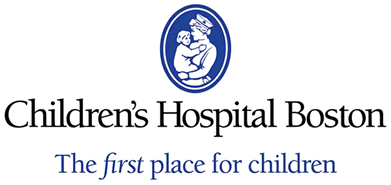Inhaled Nitric Oxide for Pediatric Painful Sickle Crisis
| Status: | Completed |
|---|---|
| Conditions: | Anemia |
| Therapuetic Areas: | Hematology |
| Healthy: | No |
| Age Range: | 9 - 22 |
| Updated: | 5/5/2014 |
| Start Date: | April 2005 |
| End Date: | December 2013 |
| Contact: | Debra Weiner, MD, PhD |
| Email: | debra.weiner@childrens.harvard.edu |
| Phone: | 617-355-6624 |
Randomized, double blind placebo controlled clinical trial to evaluate effectiveness and
safety of inhaled nitric oxide for the treatment of sickle cell painful crisis in pediatric
patients with sickle cell disease.
safety of inhaled nitric oxide for the treatment of sickle cell painful crisis in pediatric
patients with sickle cell disease.
The specific aim of this study is to evaluate the clinical effectiveness of inhaled nitric
oxide (INO) for the treatment of acute vaso-occlusive pain crisis in pediatric patients with
sickle cell disease. Nitric oxide (NO) deficiency is known to be central to the
pathophysiology of vaso-occlusion. The aim is unchanged from the original application. The
study is a randomized, double blind, placebo controlled, clinical trial with eligible
patients randomized to receive either NO (with 21% O2 final concentration) for 16 hrs with 8
hr wean (80 ppm 0-8 hrs, 40 ppm 9-16 hrs, 20 ppm 17-20 hrs, 10 ppm 21-24 hrs) or placebo
(21% O2 alone) for 24 hrs. The null hypothesis is that there is no difference in change in
mean pain score after 16 hours between patients treated with NO and placebo. The primary
outcome measure of the study remains the difference in mean change in pain scores between
groups as assessed using a 10 cm visual analogue pain scale (VAS). Secondary outcome
measures also remain the same. The study is a next step to our completed FDA Orphan Product
Development Grant funded study (FD-R-001686) that evaluated safety and efficacy of NO used
for 4 hrs for treatment of vaso-occlusive crisis in pediatric patients with sickle cell
disease.
oxide (INO) for the treatment of acute vaso-occlusive pain crisis in pediatric patients with
sickle cell disease. Nitric oxide (NO) deficiency is known to be central to the
pathophysiology of vaso-occlusion. The aim is unchanged from the original application. The
study is a randomized, double blind, placebo controlled, clinical trial with eligible
patients randomized to receive either NO (with 21% O2 final concentration) for 16 hrs with 8
hr wean (80 ppm 0-8 hrs, 40 ppm 9-16 hrs, 20 ppm 17-20 hrs, 10 ppm 21-24 hrs) or placebo
(21% O2 alone) for 24 hrs. The null hypothesis is that there is no difference in change in
mean pain score after 16 hours between patients treated with NO and placebo. The primary
outcome measure of the study remains the difference in mean change in pain scores between
groups as assessed using a 10 cm visual analogue pain scale (VAS). Secondary outcome
measures also remain the same. The study is a next step to our completed FDA Orphan Product
Development Grant funded study (FD-R-001686) that evaluated safety and efficacy of NO used
for 4 hrs for treatment of vaso-occlusive crisis in pediatric patients with sickle cell
disease.
Inclusion Criteria:
1. HbSS, HbSß0thal or HbSC documented by prior hemoglobin electrophoresis.
2. Age 9 years or greater, age 22 years or less; pediatric age range, old enough to
comply with mask and give reliable pain assessment score.
3. Acute pain crisis defined as pain in abdomen, back and/or extremities that cannot be
explained by a diagnosis other than sickle cell disease.
4. Initial pain score at least 6 cm; to optimize the likelihood of observing a
significant difference in change in pain score between INO treated and placebo
groups. Based on data from our previous study, it is anticipated that patients will
have an average pre-inhalation pain score of approximately 8 cm.
Exclusion Criteria:
1. > 24 pain crises in the last 12 months. Patients with very frequent pain crisis may
have biologic and/or psychosocial pathophysiology that differs from those with fewer
pain crises.
2. Pain crisis treated at a medical facility within the last 12 hours.
3. Use of investigational drugs other than hydroxyurea within the last 30 days.
4. Significant respiratory compromise (initial SaO2 < 90%) and/or patients likely to
have acute chest syndrome (chest pain and infiltrate) will be eliminated.
5. Clinically significant acute or chronic cardiac dysfunction.
6. Acute priapism.
7. New focal neurologic symptoms.
8. Concurrent documented or suspected bacterial or parvovirus infection.
9. Temperature > 38.4ºC. These patients may have concomitant infection.
10. Transfusion within 30 days or chronic transfusion therapy.
11. Pregnant female
12. Cigarette smoker > 1/2 ppd.
13. Allergy to morphine
-
We found this trial at
1
site
Children's Hospital - Boston Boston Children's Hospital is a 395-bed comprehensive center for pediatric health...
Click here to add this to my saved trials
